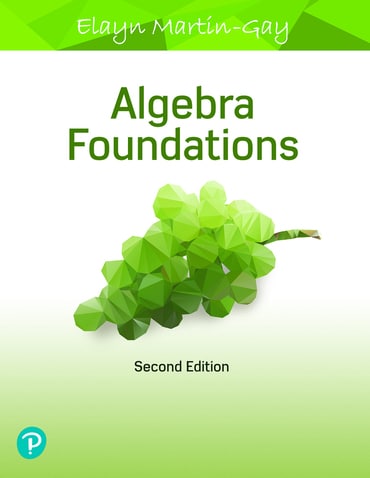Switch content of the page by the Role togglethe content would be changed according to the role
Algebra Foundations: Prealgebra, Introductory Algebra & Intermediate Algebra, 2nd edition
Published by Pearson (January 2, 2019) © 2020
- Elayn Martin-Gay University of New Orleans, Lakefront
eTextbook
per month
$186.66
MyLab
from$54.99
Need help? Get in touch

Digital Learning NOW
Extend your professional development and meet your students where they are with free weekly Digital Learning NOW webinars. Attend live, watch on-demand, or listen at your leisure to expand your teaching strategies. Earn digital professional development badges for attending a live session.

